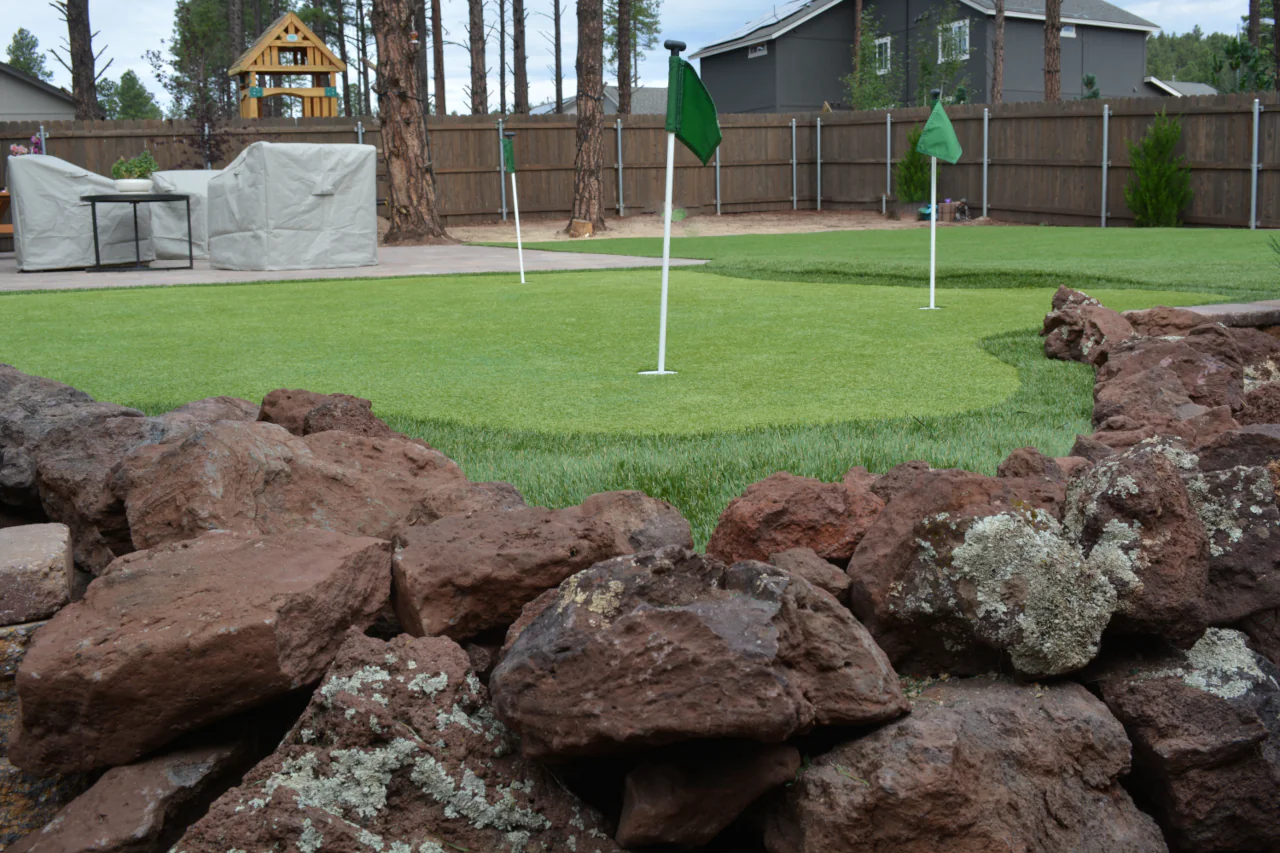How to Design a Three-Hole Practice Green

A three-hole practice green gives you a small-space-friendly way to sharpen your short game without dominating your backyard. This guide covers a thoughtful layout, beginner-friendly pin placement ideas, which turf options work best for a backyard putting green setup, and short training routines. Sprinkle in a touch of creativity and a steady routine, and you’ll be sinking more reliable putts in no time.
SIZE, SHAPE, AND HOW IT FITS THE YARD
Start by identifying a flat or mild-slope section that doesn’t conflict with walkways or landscaping. A typical three-hole green can require 300–700 square feet, depending on how much spacing you want between the holes. Think of three areas that create engaging angles: a short straight putt, a medium putt with gentle slope, and a longer, breaking putt.
If you opt for a full synthetic grass installation, pick a spot with ample sunlight and consider how the runoff will drain there. Proper base work keeps the surface consistent and helps the turf play like natural greens. If you’re short on space, stagger the holes so each one feels distinct without needing much extra material.
LAYOUT TIPS THAT MAKE PRACTICE WORTHWHILE
Vary distances: aim for one short-range hole (6–10 ft.), one medium-distance putt (12–18 ft.), and one long (20–35 ft.). That range forces different putting speeds and concentration.
Use subtle contours: small mounds or gentle low spots add challenge without requiring major grading.
Create approach area options: include a small chipping area beside one hole so you can practice pitch-and-putt sequences.
Edge details: a low-profile roll-up edge or sand trap adds style and gameplay challenges.
Throughout the layout process, note your installation goals — whether you want a full synthetic turf base or a partial renovation — because different turf products perform differently depending on prep work.
PIN PLACEMENT IDEAS FOR VARIETY
Rotate pin locations every session. Move pins around the green edges and center to create new read lines. A simple system: three-position pin rotation system where A = front-third, B = center, C = back. For extra challenge, place a temporary pin on the edge of a subtle slope to train reads and speed control.
Use removable cups or movable pin sets so you can swap pin positions without damaging the turf. Changing pins on synthetic turf putting greens is easy and lets you mimic tournament diversity in a Flagstaff backyard setting.
SHORT PRACTICE ROUTINES FOR BUSY LIVES
No need for extended training sessions. Try three simple drills that fit the three-hole layout:
Speed Ladder (6–12 minutes): Start at the short hole and putt three balls from each spot—short, mid, long—focusing on a consistent stroke length for each distance.
Break Read Drill (8–12 minutes): From a single starting point, putt to each of the three holes with the pin in a different location. Work on analyzing contours and modifying your stroke pace.
Pressure Finish (5–8 minutes): Make two-putt rounds around the three holes. If you two-putt all three, reward yourself with a harder approach next round.
Short routines like these keep progress steady and make practice easy to maintain. Mix them over several days for full-scope training.
